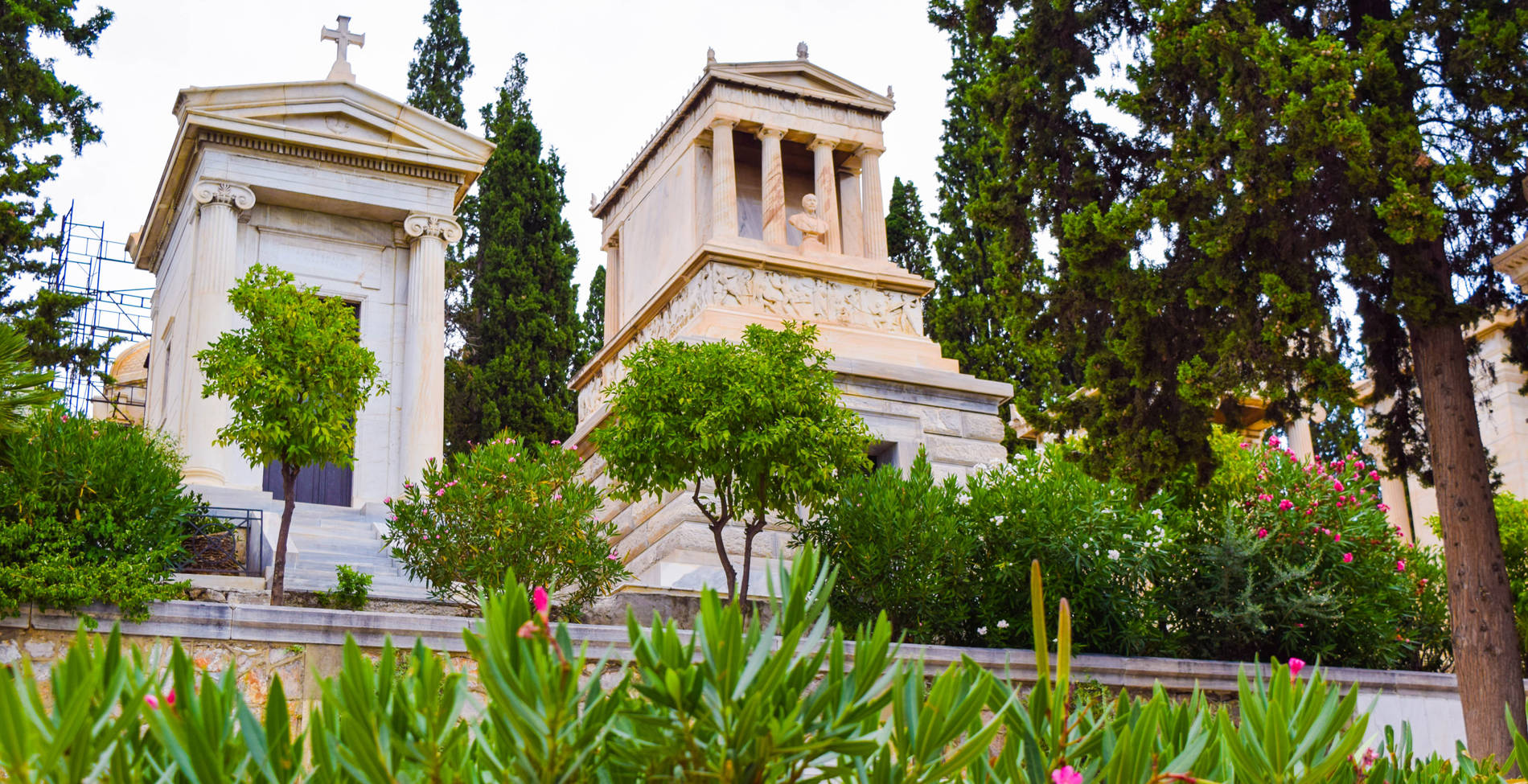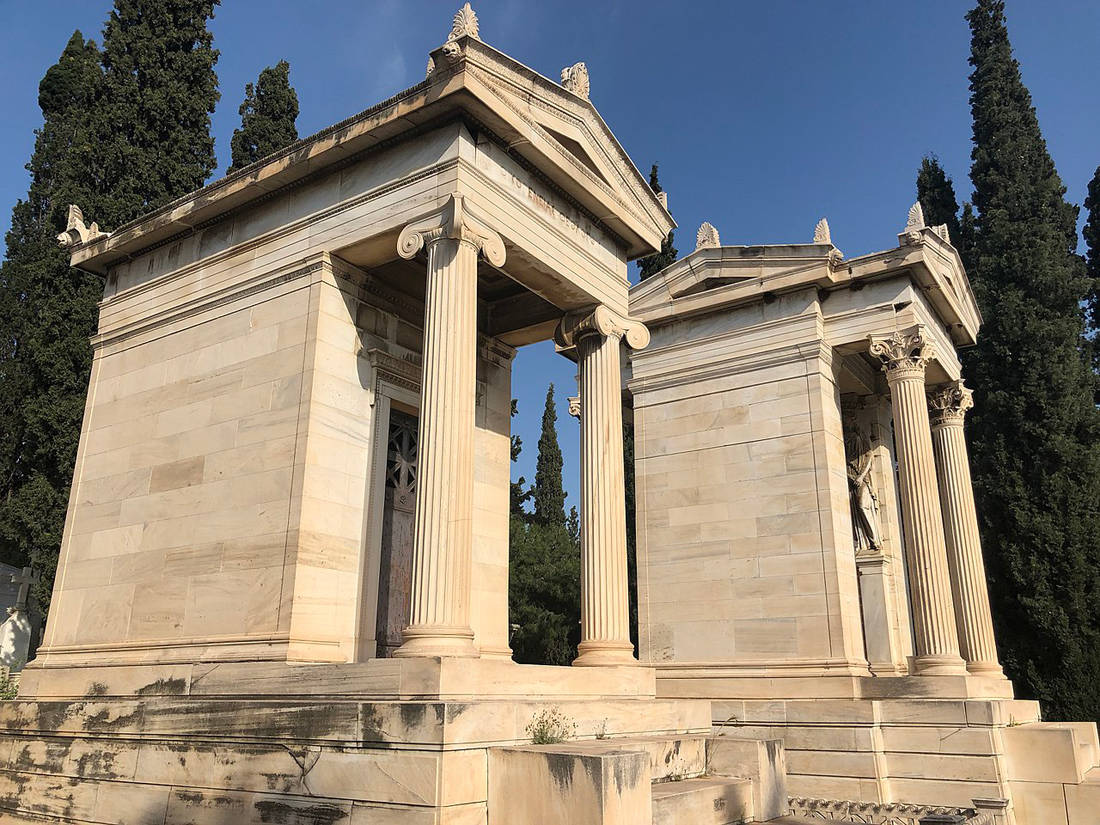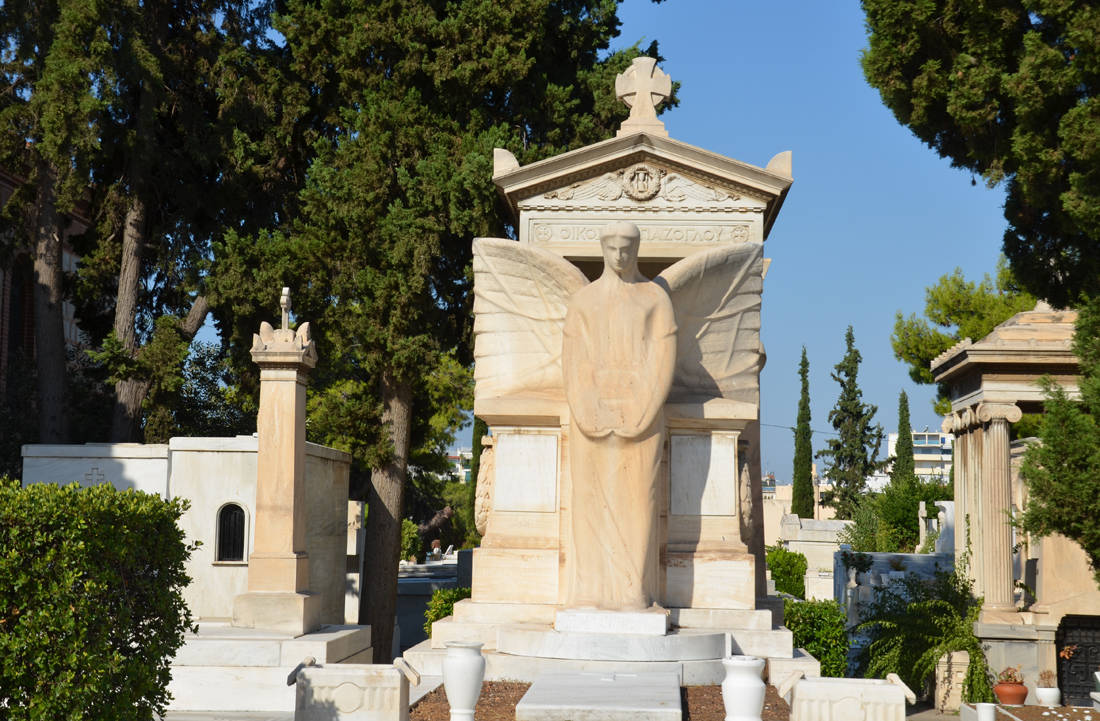Leaving behind the main gate, busts and small temples project above the monuments of those who "sleep" forever. The simple marble slabs and simple inscriptions here seem to be a minority, giving way to impressive creations reminiscent of anything but a cemetery.
The oldest cemetery in Athens is not like everything else. And not because it is the oldest, but because its tombs are more reminiscent of works of art than ordinary tombs. The classic cross is missing in most cases, having been replaced by amazing works of art by talented and renowned artists.
An open-air museum, this is how it could be characterized First Cemetery of Athens, at the end of Anapafseos Street and south of the Panathinaikos Stadium, in the area of Mets, as the site houses the largest, outdoor depository of sculptures in the country, with works of great artists of great value.
It was created after the Royal Decree "On the cemeteries and the burial of the dead" and was the first burial place of the newly established capital of the Greek state.

Its location is quite "strategic" as it is located behind the palace and is thus associated with power. The first works for the "beautification" of the space were carried out in 1841, reaching today to count more than 12.000 monuments and 700 γλυπτά, works of art worth admiring up close.
This is the place where the most important Greeks of the last century were buried: Fighters of the Revolution of '21, inhabitants of the city since the time of Otto, politicians and benefactors, actors and singers, writers and writers, people who laid the foundation stone for the creation of modern history not only of the city but also of the whole country.
Reaching today, approximately 1.000 works, in total, have been created by 108 sculptors, including great artists of the 19th and 20th century, which one can observe completely free of charge!
Specifically, the sculptor Th. Thomopoulos wrote about the First Cemetery of Athens in 1905 that "This includes all the movements of modern sculpture". In his outdoor sculpture case, then, one can observe his works Giannouli Halepa, Dimitriou Filippotis, Costa Valsami, George Bonanou and others.
Some of his most "famous" sculptures

Undoubtedly, the most famous sculpture from the works that one will find in the First Cemetery of Athens is none other than the "Sleeping of Halepa" - one of the most emblematic works of modern Greek sculpture - which adorns the tomb of 18-year-old Sofia Afentaki. There are two conjectures about her untimely death: one wants the young girl to fall in love during a trip to Naples, a tenor, a love "forbidden" for her family that pushed her to cut the thread of her own life and the second wants the 18-year-old to leave life defeated by tuberculosis. The great sculptor created this work after an order from the girl's family in 1877. In the work "Sleeping" is presented with bent arms legs and carefree hair, lying down and sleeping soundly. The fact that she holds a cross in her hands is the only evidence that she is dead.
Also of interest is the tomb of Henry Schliemann (1822-1890), the explorer who discovered the treasure of ancient Troy, in drawings of his friend and collaborator of the German, pioneering architect Ernest Ziller, who influenced the image of Athens as much as anyone else, offering it real "ornaments" benchmarks for the city's architecture and consistent values over time. It is a tomb-mausoleum, which gives the impression of an ancient Greek temple, which is decorated with various scenes from snapshots of the Trojan War.

One of the most impressive is also that of Georgios Averof, designed by Georgios Vitalis and designed by Dimitrios Filippotis. In it the national benefactor is depicted sitting on a high pedestal, decorated with four lions.
The "mourning angel" of Ioannis Vitsaris (1844-1892), one of the five samples of the work of the "misunderstood" sculptor in the First Cemetery of Athens, which adorns the tomb of the family of Nikolaos Koumelis depicts the dumb pain with the relaxed form of the angel to be leaning on the grave, half-wrapped with a sheet and loosely crossed legs. In fact, the specific work of Vitsaris was praised by Vizyinos and other scholars for the ideal and most faithful, according to the classicist ideals, depiction of the supreme pain
The rhythm of the monuments and the influences of the artists

Most of the monuments found in the First Cemetery are characterized by their romantic-classicist style, with the majority of them presenting strong elements of the classical architecture. In fact, there are many times when there are even copies of monuments of antiquity, such as that of Lysikrates in Plaka that adorns the memory of the Karapanos family.
However, there are many works inspired by Egyptian art, depicting sphinxes and sarcophagi, such as the memorial of Mikhail Tositsa. The great benefactor was the first Consul General of Greece in Alexandria and in his memory stands the column with his statue and two sphinxes on either side.
Other monuments present influences from the Gothic and Byzantine rhythms, but also elements of different rhythms, when architecture begins to be distinguished for its eclectic tendencies.
The craftsmen who created the tombs were mainly from Tinia, while for the most part, and at the request of their wealthy customers, they used exclusively Pentelic marble for their construction.

The "oldest sculpture in the world", as it is typically called the burial sculpture, is an art that is used for a specific, and mainly practical, reason. In addition to being used to create decorative works of art on the graves of the deceased, it is also used as a kind of identifying feature of each tomb, but also a gift from relatives to the deceased, as a mark of honor of their memory.
The characteristics of this sculpture, then, seem to most often refer to the ancient Greek ideal, following the classicist tendencies and influences.
A visit here, although it sounds very macabre, is definitely a unique and impressive experience, as the cemetery gives the image of a lush garden full of pines and cypresses, among which special works of sculptural art emerge. This prompt, after all, has been going on since 1840, as the First Cemetery is included in the travel guides of the time, characterized as an open-air sculpture gallery of Athens.
